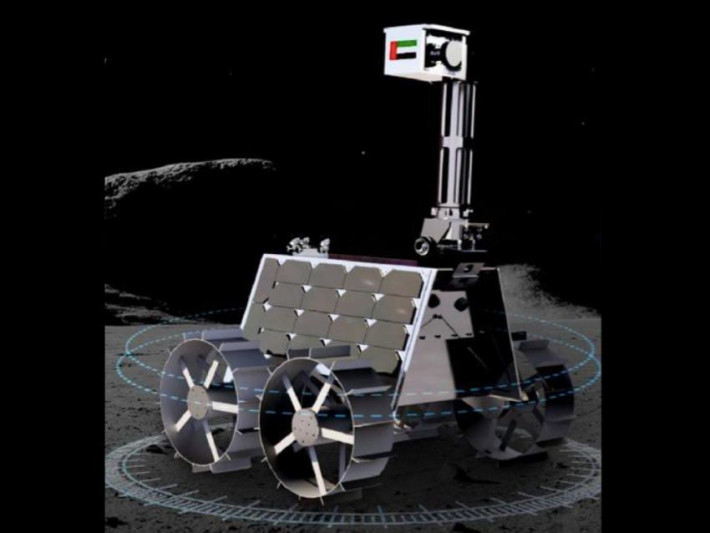Schiller Institute Statement: President Alberto Fernández to China; Ibero-America to Mars!
April 10 (EIRNS) — {The Schiller Institute today issued the following statement in Spanish for broad circulation in Ibero-America and Spain. Below is the English-language version.}
The upcoming May 2021 trip to China by Argentine President Alberto Fernández, in which he is scheduled to sign a Memorandum of Understanding with China on the Belt and Road Initiative – the global infrastructure project involving nearly 150 nations – presents a unique strategic opportunity.
1) All of Ibero-America can take a giant step towards finally breaking out of the straitjacket of financial looting by the dying London/Wall Street system, and join instead with the Belt and Road, sometimes called the New Silk Road, and its high-tech, science-driver approach to development.
2) An Argentina-Mexico axis can emerge to propose a game-changing policy in the Western Hemisphere: that China and the U.S. shall jointly work on developing the Mexican-Central American region in particular, and also all of Ibero-America, by cooperative efforts around extending the BRI into the region. Such development is the way – the only way – to stop the drug trade, stop desperate migration, stop the gangs, stop the poverty, and stop the COVID-19 pandemic.
“But is it possible?” people will ask skeptically. Can we really end poverty? Well, look at China, where 850 million people were lifted out of poverty in 40 years. If China can do it, why not we?
Can small nations actually hope to master the most advanced science and help develop breakthroughs for all mankind? Well, look at tiny United Arab Emirates, and their historic achievement of sending an orbiter to Mars. If the UAE can do it, why not we?
Can we really get the U.S. and China to cooperate in the development of Mexico and all the Americas, instead of heading towards confrontation and war which only serves the Establishment’s geopolitical interests? Yes – if the U.S. returns to its senses, and to the policies of its greatest sons: Washington, Lincoln, Franklin Roosevelt, and Lyndon LaRouche. The current breakdown crisis of the Western financial system has now made that possibility a necessity – if the U.S. itself is to survive Wall Street’s unavoidable demise.
The key is space, beginning with an international 50-year Moon-Mars exploration and colonization project, powered by fusion power, that the nations of Ibero-America – especially their youth – must participate in.
It just so happens that two of the world’s premier space-launch sites are in the South American continent: Alcântara in Brazil, and Kourou in French Guiana. They are very close to the equator, which is a big advantage for space launches. Additionally, Argentina and Brazil both have very significant aerospace capabilities, which can help be the cornerstones for cooperation with China, the United States, and other space-faring nations such as Russia and India, to develop those space-launch sites in those two locations as centers of scientific and economic development for the entire region.
Argentine President Fernández should be entrusted with a mission on behalf of all of Ibero-America during his upcoming trip to China, especially in light of his developing close working relationship with Mexican President Andrés Manuel López Obrador, which is already benefiting the whole region. In addition to the package of Argentine infrastructure projects that he is already planning to discuss with China’s President Xi Jinping – which importantly includes nuclear energy – Fernández should propose regional great development projects as well, especially in the field of space. Specifically, he should propose establishing two polytechnic institutes, or institutes for space science educational activity: one in Argentina and one in Mexico — perhaps in the city of Querétaro near Mexico City. These two centers will serve as centers of international scientific cooperation, and as poles of educational and technological progress required to bring the entire continent into this kind of high-technology space development. They will be centers of the emerging New Space Silk Road.
The other crucial area for cooperation is developing both the science and the health infrastructure needed to defeat the COVID-19 pandemic – and any new pandemics that might emerge to threaten mankind. Again, Argentina-Mexico cooperation is leading the way, and must be used as a lever to bring in international support to aid the entire region.
The Schiller Institute has long proposed a full set of regional infrastructure projects as part of the World Land-Bridge. We mention some of the key ones here:
1) Build a set of South American bi-oceanic rail corridors connecting the Atlantic to the Pacific (including a northern Brazil-Peru route; a central Brazil-Bolivia-Peru route; and a southern Brazil-Argentina-Paraguay-Uruguay-Chile route). All are viable; all are necessary.
2) Construct a North-South high-speed rail line extending all the way from Tierra del Fuego in the south to the Bering Strait tunnel in the north, traversing South America, the Darien Gap, and the entirety of Central America and Mexico. These would be development corridors of about 100 kms in width, with integrated power, industry, agriculture and communications infrastructure along the way. That would create millions of new productive jobs along the way, which is the sine qua non of defeating poverty and the associated drug trade and migration problems in the region.
3) Establish new centers for the industrialization of raw materials throughout Ibero-America, such as a major steel production center near the Mutún iron mine in Bolivia; aluminum plants near the plentiful bauxite in Jamaica, Guyana and Surinam; and so on. Stop the neo-colonial pattern of looting of raw materials in order to pay the foreign debt (various times over), leaving only poverty and devastation behind.
4) We need nuclear energy, and lots of it, as well as the total technological up-shift associated with this new energy platform – especially as we transition into fusion power. Solar and wind power are a bad joke. Their low energy flux density, their high physical-economic costs, and their intrinsically interruptible nature, mean a return to the technological platform of the Middle Ages, with a corresponding collapse of population to medieval levels. The Green New Deal is nothing but old, unscientific Malthusian depopulation policy, with a fresh coat of (green) paint.
That Malthusian agenda which is planned for the April 22-23 global summit on climate change, scheduled to start on Earth Day, has to be totally rejected – as it is beginning to be by nations such as India, China and others. In fact, Earth Day should simply be cancelled, and replaced by a more human holiday: Mars Day!
President Alberto Fernández’s upcoming trip to China can become the first step in Ibero-America’s participation in mankind’s mission to Mars.


















